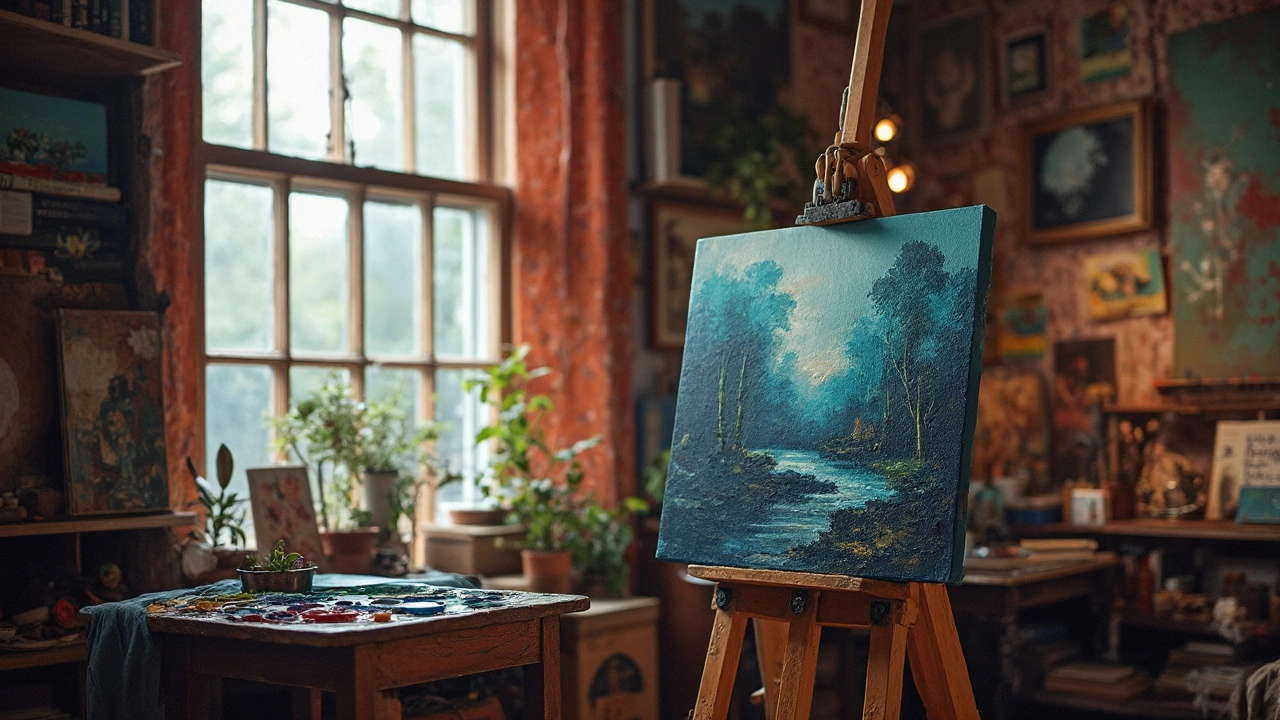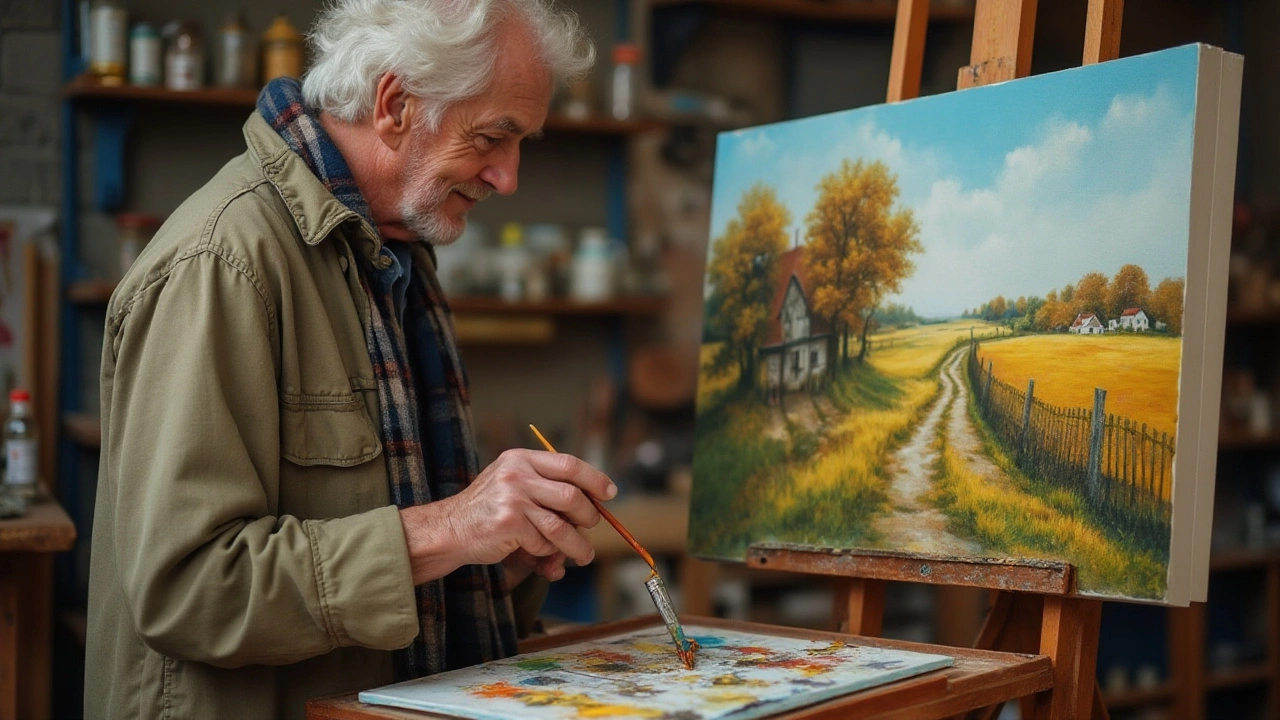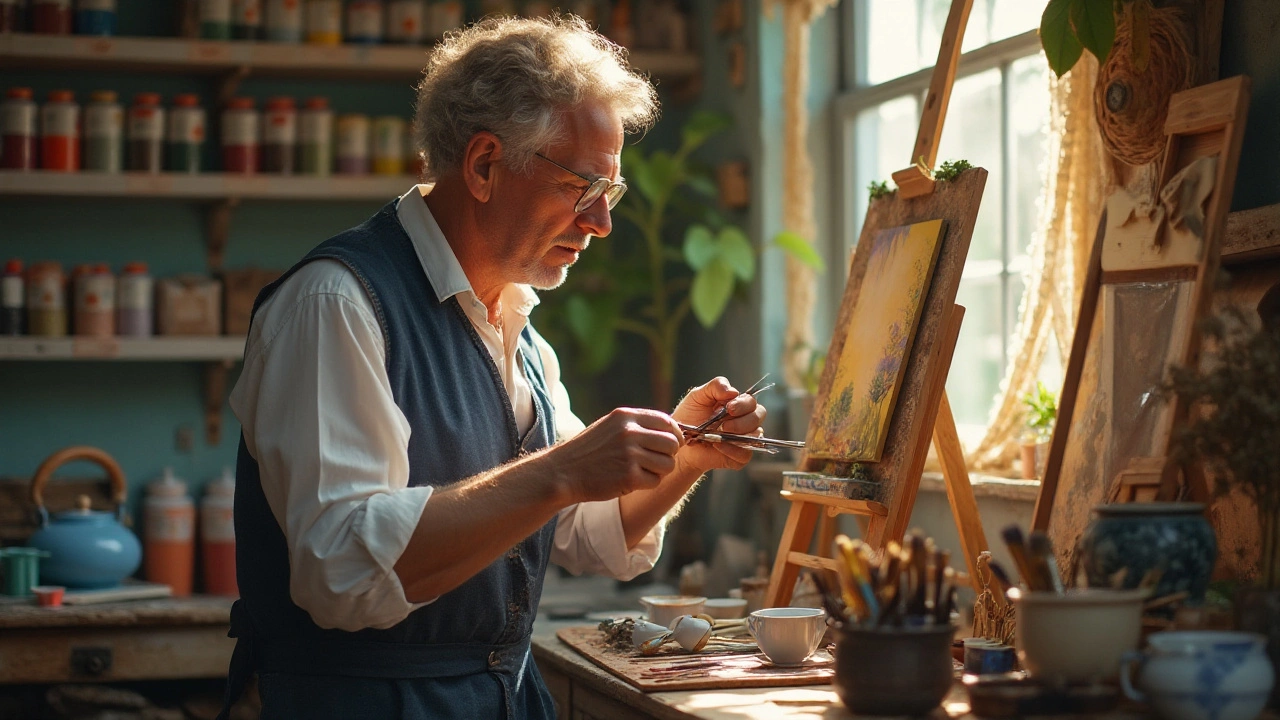Oil Painting Techniques You Can Use Right Now
Whether you’re just starting out or have been painting for years, knowing a few solid techniques can save you time and frustration. In this guide we’ll cover the most common problems you might hit and the everyday tricks that make your work look richer.
Fixing Mistakes: Wet, Tacky and Dry Layers
It’s easy to get a paint layer wrong – maybe the color is off, the edge is too hard, or the whole area looks muddy. Here’s a quick way to deal with each stage.
Wet layer: If the paint is still wet you can gently wipe it away with a clean, soft cloth or a paper towel. For small spots, a dry brush can lift the paint without ruining the surface. Once the area is clean, re‑apply the correct color using a thin glaze to blend it in.
Tacky layer: When the paint is dry to the touch but still soft, use a palette knife to scrape off the unwanted part. A little bit of mineral spirits on a rag will help smooth the area before you add a fresh layer. Work in thin washes – thick paint on a tacky surface often cracks later.
Dry layer: Fully dried paint needs a more aggressive approach. Lightly sand the spot with fine‑grit sandpaper, then wipe away dust. Apply a thin, transparent glaze over the sanded area; the glaze will bind the new paint and hide any brush marks.
Everyday Techniques to Boost Your Painting
Beyond fixing errors, a handful of core techniques can lift any oil painting.
Glazing: Mix a small amount of oil medium with a lot of pigment. Apply the glaze over a dry layer and let it dry slowly. The thin color builds depth and makes shadows feel real.
Scumbling: Use a dry brush loaded with a little paint and drag it lightly over a darker area. This creates a broken, textured look that’s perfect for clouds, foliage, or rough stone.
Impasto: Add extra medium or use a thick‑bodied paint and press it onto the canvas with a palette knife. The raised texture catches light and adds drama – great for highlights on a face or the thick bark of a tree.
Wet‑on‑wet (Alla Prima): Lay down your first color and work quickly while it’s still wet. Blend directly on the canvas for soft edges. This method works well for portraits where you want skin tones to melt together.
Dry brush: Load a brush with a little paint, wipe most of it off, then drag it across a dry surface. The result is a scratchy, textured line that works for hair, grass or gritty surfaces.
Try mixing two of these techniques in one painting – for example, start with a wet‑on‑wet background, add scumbled highlights, and finish with an impasto accent. The contrast keeps the eye moving and adds visual interest.
Remember, the best way to learn is by doing. Pick one technique, practice on a small canvas, and notice how the paint behaves. As you get comfortable, layer more methods together. Soon you’ll be fixing mistakes on the fly and adding depth without thinking twice.
Happy painting! Keep experimenting and don’t be afraid to make a mess – it’s often where the coolest ideas show up.

1 Apr 2025
Figuring out whether to start with dark or light can be confusing for beginner oil painters. This article explores the reasons behind each approach, breaking down common techniques and offering practical tips. Learn how the choice can affect your painting's mood and depth. Plus, unlock secrets from well-known artists to inspire your creative journey. Make your oil painting process more enjoyable and satisfying with these insights.
Continue reading...

31 Oct 2024
Linseed oil is a staple in the art of oil painting for its ability to alter paint texture and drying time. This article delves into why artists choose linseed oil as a medium, exploring its benefits and the impact on both color vibrancy and longevity. From its historical usage to practical tips on application, discover how linseed oil can transform your painting experience. Whether you're a seasoned artist or a beginner, understanding the relationship between linseed oil and oil paints can enhance your technique and results.
Continue reading...

16 Oct 2024
The 3 P's of painting—Preparation, Patience, and Precision—are essential elements for artists looking to master the art of oil painting. This article delves into each of these foundational aspects, providing insightful tips and interesting facts that can aid both beginners and seasoned artists alike. Learn about the significance of a well-prepared canvas, the virtue of patience in layering colors, and the importance of precision in brushstroke techniques. Understand how embracing these principles can transform your approach to oil painting.
Continue reading...


